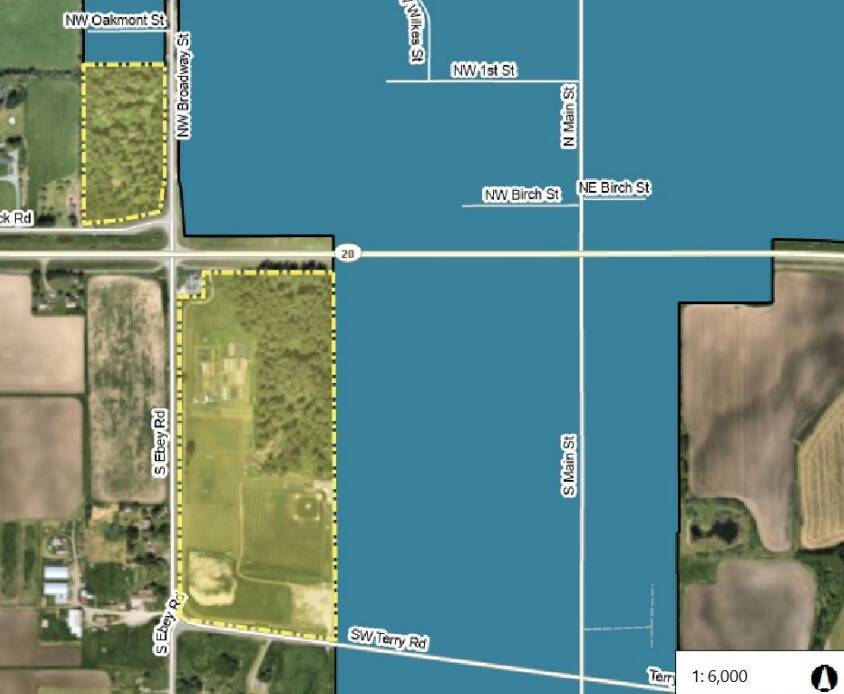The Town of Coupeville is seeking to create a limited urban growth area to annex two parcels into its incorporated boundaries, but they won’t accommodate new homes.
Being the only town in the state that is located completely within a national historic reserve — precisely in Ebey’s Landing National Historical Reserve — Coupeville is exempt from the requirement of designating an urban growth area that can accommodate population growth projections outside of town limits.
According to state law, municipalities can’t annex land that is located outside of their urban growth areas. Yet, Coupeville can still choose to establish an urban growth area to annex land into the town, Mayor Molly Hughes wrote in a memo submitted to county officials in September.
The town is currently eyeing two properties that, combined, cover 26.27 acres.
The 21.27-acre parcel located at the corner of South Ebey Road and Southwest Terry Road is owned by the Coupeville School District, which uses it for athletic and farm activities. The other parcel, which only measures five acres and it’s thus known as the “Five-Acre Woods,” is located at the northwest corner of Northwest Broadway Street and Black Road and has been owned by the town since 2022, when it obtained it from the Whidbey Camano Land Trust, according to information provided by Hughes.
The town proposes to place all of the school district’s property under the same jurisdiction, which would facilitate future attempts of securing permits and ensure consistency with land use requirements, she wrote. The district has also shown interest in potentially connecting the parcel to the town’s sewage system in the future.
During a council meeting on Dec. 10, Councilmember Pat Powell said she didn’t see how the town would benefit from incorporating this parcel, as the district doesn’t pay property taxes and annexation might increase costs for the town. Councilmember Michael Moore also expressed he did not see it as an urgent matter.
The Five-Acre Woods will continue to serve as a vegetative buffer. While it’s already owned by the town, transferring the parcel into town limits would alleviate the county from the responsibility of overseeing its future uses, Hughes wrote.
On Dec. 5, Director of Island County Planning and Community Development Jonathan Lange wrote in a response to Hughes that the county is willing to consider the request.
Yet, he wrote, the request would better meet the criteria to be granted if the annexation was meant to accommodate growth. At the same time, there are some county provisions that would allow for incorporating parcels used for open space and public facilities into the town’s urban growth area.
The county also wants Coupeville to consider the trade-offs of accommodating growth within the urban growth area’s current limits, Lange wrote. The town could instead opt for an expansion that would accommodate future growth on parcels that wouldn’t “impact” Ebey’s Reserve, he added.
According to information provided by Community Planning Director Joshua Engelbrecht during last Tuesday’s meeting, Coupeville’s location allows the town to choose to restrict growth to preserve the historic character of Ebey’s Landing National Historical Reserve.
As a result, the town’s housing allocation for 2045 was only set at 350, which is not proportional to the concentration of services and employment available, he wrote.
The town will meet this housing target by using vacant or underutilized land within the incorporated town, Engelbrecht wrote. This should help preserve surrounding agricultural lands that are not protected by conservation easements.
Current deficits, he added, should be resolved by changing the town’s zoning maps and development regulations.
Developing outside of the town limits is challenging because there is limited availability of undeveloped land that is suited for growth due to conservation easements, current use tax programs for farms and forests, and high intensity noise from the nearby Naval Outlying Landing Field, Engelbrecht wrote.



